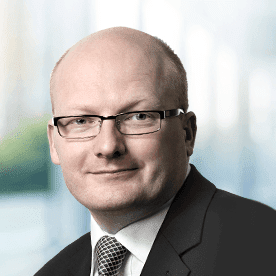-
Past performance, historical and current analyses, and expectations do not guarantee future results. There can be no assurance that any investment objectives will be achieved. The information contained here reflects the views of AllianceBernstein L.P. or its affiliates and sources it believes are reliable as of the date of this publication. AllianceBernstein L.P. makes no representations or warranties concerning the accuracy of any data. There is no guarantee that any projection, forecast or opinion in this material will be realized. Past performance does not guarantee future results. The views expressed here may change at any time after the date of this publication. This document is for informational purposes only and does not constitute investment advice. AllianceBernstein L.P. does not provide tax, legal or accounting advice. It does not take an investor’s personal investment objectives or financial situation into account; investors should discuss their individual circumstances with appropriate professionals before making any decisions. This information should not be construed as sales or marketing material or an offer or solicitation for the purchase or sale of any financial instrument, product or service sponsored by AB or its affiliates.
The views expressed herein do not constitute research, investment advice, or trade recommendations and do not necessarily represent the views of all AB portfolio-management teams.
MSCI makes no express or implied warranties or representations, and shall have no liability whatsoever with respect to any MSCI data contained herein. The MSCI data may not be further redistributed or used as a basis for other indices or any securities or financial products. This report is not approved, reviewed or produced by MSCI.
The Three Dos and Don’ts of Target Date Investing
Past performance and current analysis do not guarantee future results.
As of 31 December 2021
All returns are in GBP.
Gilt forecasts are for UK government seven-year constant maturity bonds; global stocks’ forecasts are for a universe similar to the MSCI World Index. Global Corporate Bond forecasts and realized returns are both hedged to GBP.
Indexes used: MSCI World Net Return (NR), MSCI World Small Cap NR, MSCI Emerging Markets NR, FTSE EPRA NAREIT Developed NR, Bloomberg Global Aggregate Corporate Total Return (TR), FTSE Actuaries UK Index-Linked Gilts All Stocks TR, FTSE Actuaries UK Conventional Gilts All Stocks TR, ICE LIBOR 1 Week, UK Consumer Price Index (CPI).
An investor cannot invest directly in an index or average, and these figures do not include the sales charges or operating expenses associated with an investment in a portfolio, which would reduce total returns.
Source: Morningstar and AllianceBernstein (AB).
For illustrative purposes only.
As of 31 December 2021. Source AB.
For further information please contact:
Henry Smith is a Vice President and Investment Strategist on AB’s Multi-Asset Solutions team. He is responsible for the product strategy and communication of AB’s UK defined contribution, custom multi-asset and sustainable multi-asset solutions. Smith joined the firm in 2019, following more than two years at Lane Clark & Peacock, where he provided investment, research and governance advice to a range of UK defined contribution pension schemes. Before that, he worked at Capita Employee Solutions, where he advised both UK defined contribution and defined benefit pension schemes. Smith holds a BSc in financial economics from the University of Essex and is a CFA charterholder. Location: London
David Hutchins is a Senior Vice President and Head of AB's Multi-Asset Solutions business in EMEA. He is responsible for the development and management of multi-asset portfolios for a range of clients. Hutchins joined the firm in 2008 after spending two years at UBS Investment Bank, where he was responsible for devising and delivering innovative capital markets risk-management solutions for pension schemes. Prior to that, he spent 13 years at Mercer, where he served as a European principal and scheme actuary, providing trustee and corporate advice to a range of UK pension funds and their sponsors. Hutchins holds a BSc in mathematics and a PGCE from the University of Bristol. He has chaired the Investment Management Association's Defined Contribution Committee and formerly chaired the defined contribution industry working group for the UK government's "defined ambition" project. Hutchins is a Fellow of the Institute and Faculty of Actuaries. Location: London




